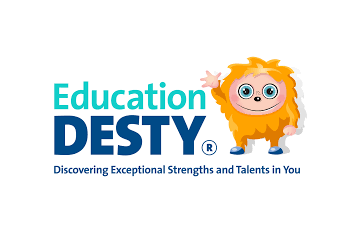Remote Education

Remote education provision: information for parents
This information is intended to provide clarity and transparency to children and parents or carers about what to expect from remote education where national or local restrictions require entire cohorts to remain at home.
For details of what to expect where individual children require a remote education for circumstances when in-person attendance is not possible, please see the final section of this page.
The remote curriculum: what is taught to children at home
A child’s first day or two of being educated remotely might look different from our standard approach, while we take all necessary actions to prepare for a longer period of remote teaching.
What should my child expect from immediate remote education in the first day or two of children being sent home?
In key stage 1 and key stage 2 (years 1-6), teachers will set work that the children can access on Doodle and Seesaw.
In early years, this will include watching Numberblocks and Alphablocks, counting and sorting activities, singing nursery rhymes and listening to stories.
Phonics provision will be made available through the RWInc portal.
Following the first few days of remote education, will my child be taught broadly the same curriculum as they would if they were in school?
We teach the same curriculum remotely as we do in school wherever possible and appropriate. However, we have needed to make some adaptations in some subjects.
For example, in art we may change the task to ensure that children will have access to resources at home e.g. clay modelling altered to junk modelling – this may apply to other subjects where the resources required are not easily accessible for the majority at home.
Remote teaching and study time each day
How long can I expect work set by the school to take my child each day?
We expect that remote education (including remote teaching and independent work) will take key stage 1 children broadly three hours each day and key stage 2 children broadly four hours each day.

Accessing remote education
How will my child access any online remote education you are providing?
Our curriculum is planned and sequenced to ensure that new learning continually builds on prior learning. When moving to remote learning, teachers will continue to teach our planned curriculum to ensure that our children continue to progress through the curriculum. Therefore we will continue to teach a broad and balanced offer that mirrors the curriculum and timetabling that would be delivered in school.
Children will receive their education through a mixture of videos, live sessions and independent activities set by their teacher and supported where necessary by a parent/ carer. The work will be posted on the children's page on Seesaw. Teachers will invite children to class meetings which will take place using Microsoft Teams.
Children will be able to submit their work through Seesaw. Parents will also be able to communicate with the teaching staff using the message on Seesaw.
How will you assess my child’s work and progress?
Feedback can take many forms and may not always mean extensive written comments for individual children. Our approach to feeding back on children’s work is as follows:
teachers will provide feedback to work submitted through Seesaw.
feedback will also be provided through quizzes marked automatically using Microsoft Forms
feedback will be provided daily in a variety of forms such as whole class feedback and during the class meetings.
If my child does not have digital or online access at home, how will you support them to access remote education?
We recognise that some children may not have suitable online access at home. We take the following approaches to support those children to access remote education:
Device loan
The academy has a small number of devices that can be issued to children who do not have an electronic device or have multiple children who are sharing one device. Laptops and iPads will be loaned out from the school with a receipt system.
Internet access
Any families struggling with internet connection can contact the academy or their child’s class teacher to discuss options. SIM cards with prepaid data are available for families to use for accessing remote learning. We may also be able to signpost parents to schemes that will allow them to access more mobile data.
Paper copies
If printed materials are needed, these can be collected from school by prior arrangement. If this is required, parents can contact the class teacher. If children do not have online access and use printed materials, this can be brought to school when a new printed materials pack is collected.
Additional support for students with particular needs
How will you work with me to help my child who needs additional support from adults at home to access remote education?
We recognise that some children, for example some children with special educational needs and disabilities (SEND), may not be able to access remote education without support from adults at home. We acknowledge the difficulties this may place on families, and we will work with parents and carers to support those children in the following ways:
Class teacher/ teaching assistant will provide work to support individual targets
The SENDCO will monitor arrangements to ensure they meet the needs of the child
Remote education for children where circumstances make in-person attendance not possible
Where individual children cannot attend school due to circumstances where in-person attendance is not possible, but they are able to learn, how remote education is provided will likely differ from the approach for whole groups. This is due to the challenges of teaching children both at home and in school.
If my child is not in school because they are self-isolating, how will their remote education differ from the approaches described above?
Work will be set which reflects the current learning taking place in the class. However, live class meetings and teacher recorded videos will not be available.









